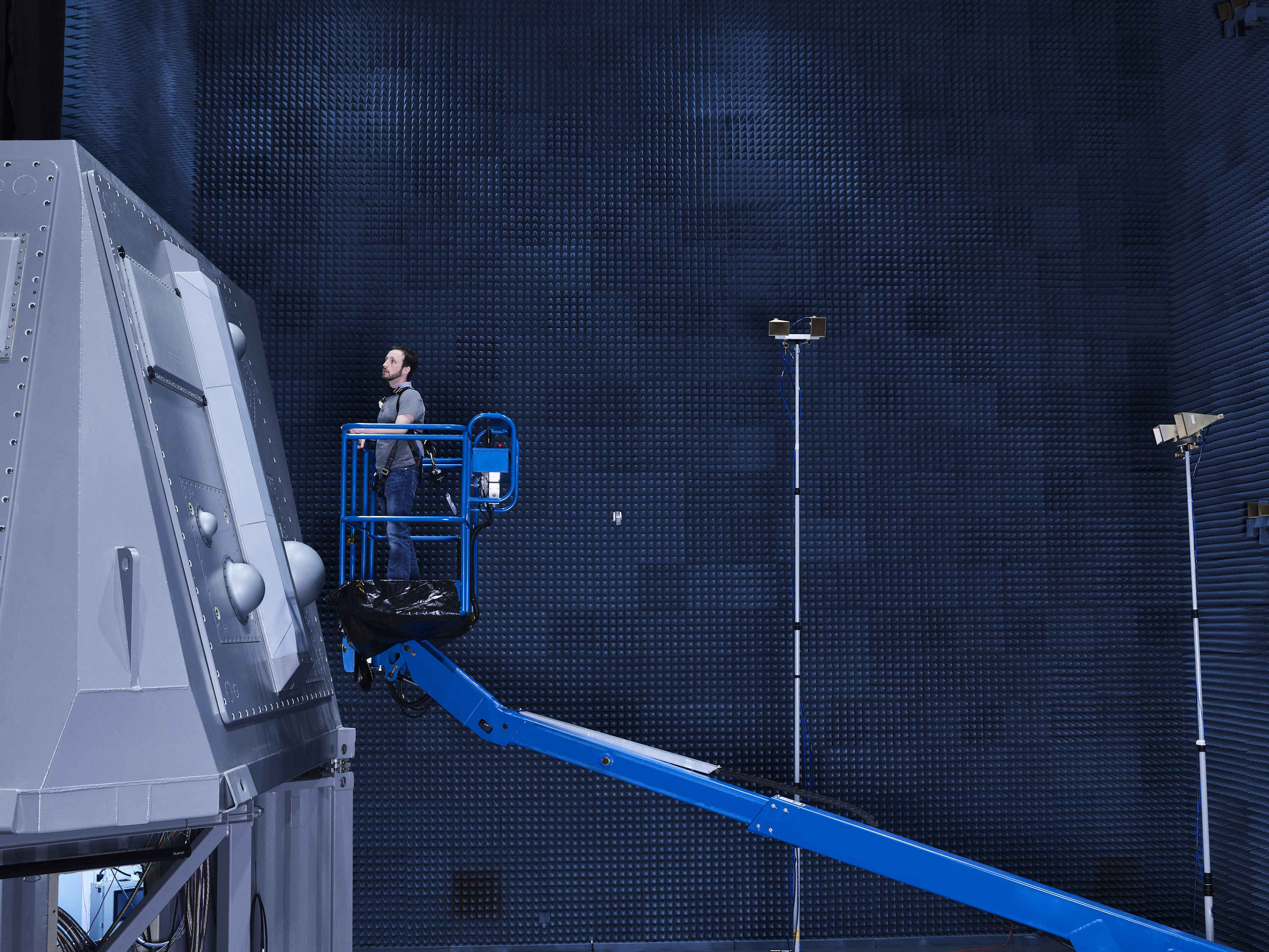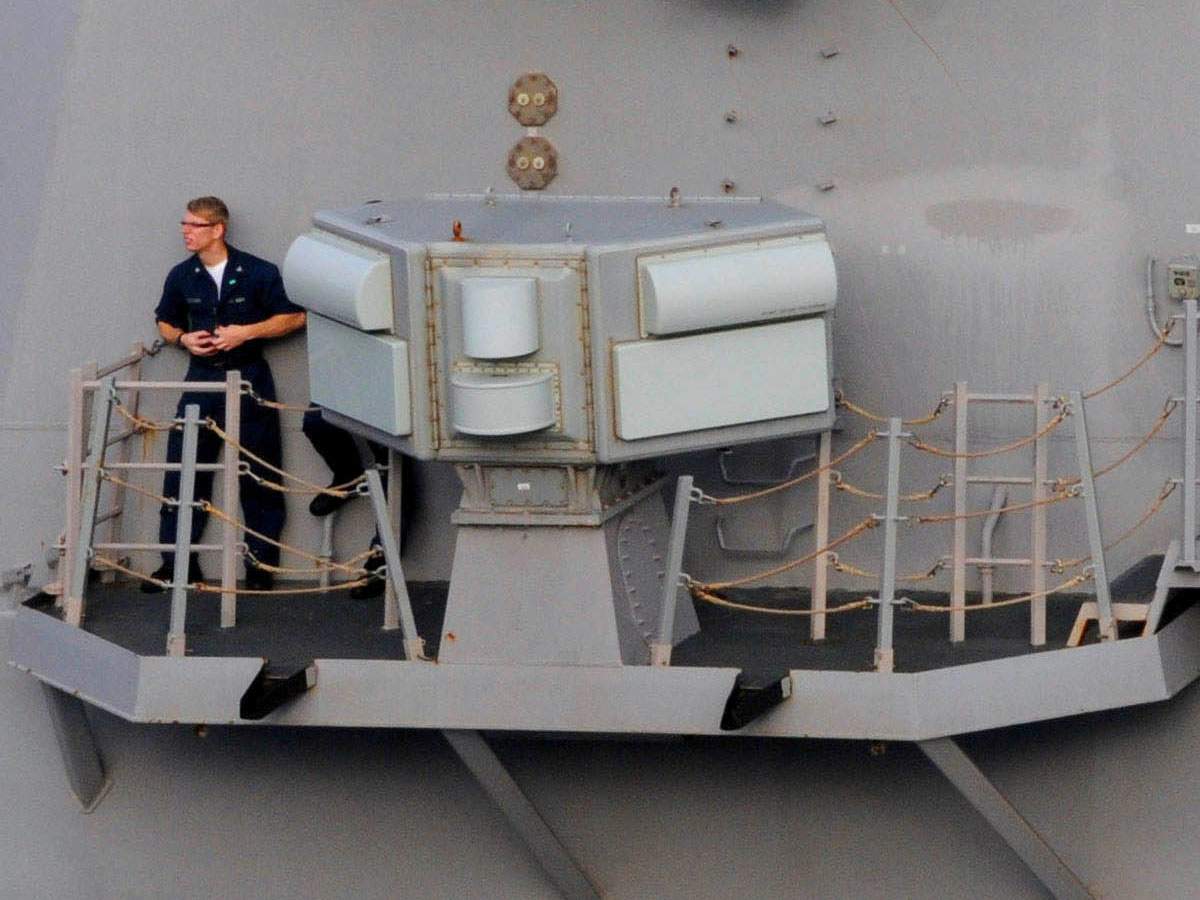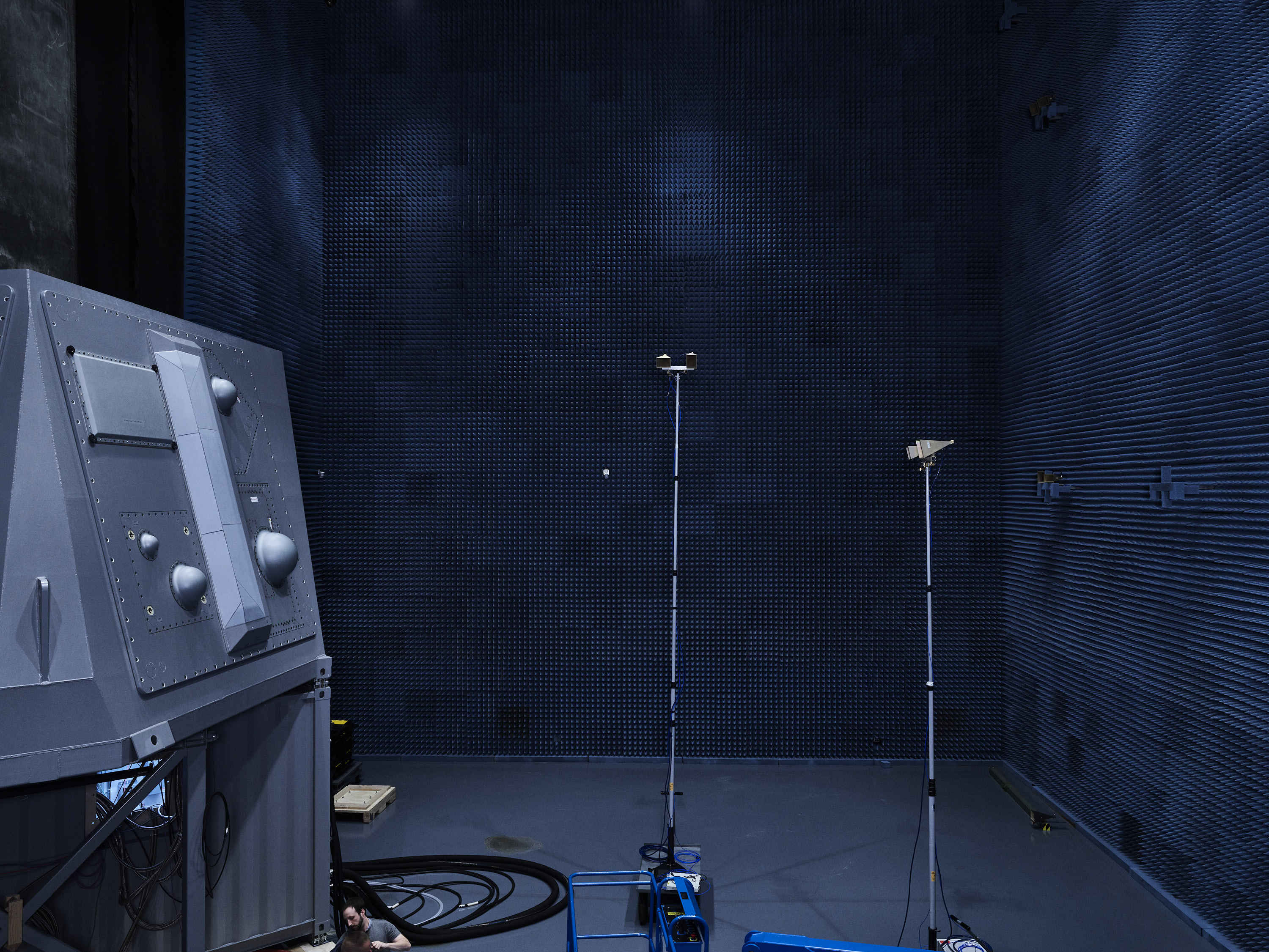
ANNE ARUNDEL COUNTY, Md. – With limited and costly ways for a surface warship to physically take out an incoming anti-ship missile, the Navy has been pursuing more ways a warship could use the power of electronic spectrum to splash threats.
To that end, the first array of a massive update of the Navy’s surface electronic warfare systems is preparing for its ground tests later this year. The work is part of the Navy’s AN/SLQ-32(V)7 Surface Electronic Warfare Improvement Program under Northrop Grumman Block 3 SEWIP effort, company officials told USNI News last week.
Now with the early testing nearing completion, the first engineering and manufacturing development system in Maryland is set for land-based testing at the Navy’s facility in Wallops Island, Va., Mike Meaney, Northrop vice president of Land and Maritime Sensors told USNI News last week.
The tests come after more than a decade of incremental improvements to the Navy’s legacy surface electronic warfare systems. Prompted by the looming threat of a new generation of Chinese and Russian anti-ship missiles, the Navy has been updating the legacy “Slick 32″ 1970s-era missile jammers on today’s guided-missile cruisers and destroyers in increments with new technology and capabilities.
The SEWIP program was born following the 2002 cancellation of over cost and underperforming the AN/SLY-2 (V) Advanced Integrated Electronic Warfare System that was designed to replace several electronic warfare systems across the fleet. Starting in 2008, Lockheed Martin and General Dynamics won contracts for the first two improvement blocks that focused on replacing legacy components to modernize the system and creating a new passive detection system for incoming threats. Elements of the early blocks have been spotted in the fleet. Spain-based destroyer USS Carney (DDG-64) was seen by Turkish ship spotters in 2018 sporting a Block 2 array during a transit into the Black Sea.

In 2015, Northrop Grumman won a $267 million Block 3 contract to add an active electronic attack component to the earlier SEWIP components. In September, the company was awarded $100.7 million a follow-on contract for additional low-rate initial production sets for the service with options that could increase the value to $1.16 billion.
“SEWIP Block 3 will include improvements for the electronic attack by providing integrated countermeasures against radio frequency-guided threats and extending frequency range coverage,” the Navy said at the time.
Now, the first complete Block 3 system is undergoing tests in a custom-built anechoic chamber at the Northrop Grumman Mission Systems production facility adjacent to the Baltimore/Washington International Thurgood Marshall Airport. The two-story-high assembly is designed to be nested in a sponson between the AN/SPY-1D(v) radar faces of an Arleigh Burke guided-missile destroyer on the ship’s superstructure. USNI News toured the facility last week.

The diamond-shaped sponson is configured with two faces at an angle from one another. Each face has a high- and low-band transmitter and a receiver, along with the Block 2 passive detection system, Bob Sacca, the company’s SEWIP Block 3 EMD program director told USNI News.
Far larger and more power-hungry than the existing Slick 32 systems, the Block 3 configuration is essentially additional spaces welded to the side of the destroyer that are serviced from inside the skin of the ship. Additionally, the installation comes with additional cooling and power conditioning equipment that will drive the server racks on the inside of the sponson, Sacca said.
The promise is that the new system will be able to actively jam incoming missiles that threaten a warship, cue decoys and could be updated quickly as the threats evolve, Meaney said.
SEWIP is software-defined, meaning that, unlike analog radars of the past, the transmitters and receivers can easily adjust to send and receive different waveforms and allow the system to be more easily adaptable.
The adaptability for active electronic attack comes as both China and Russia are developing several new classes of missiles simultaneously at a rate that is outpacing the U.S. military. Systems like SEWIP and new directed energy weapons are part of the Navy’s bet to improve the odds of survival in conflict without sinking billions into expensive missile systems.
While the Block 3 system is being designed for the cruiser and destroyer force, Northrop is studying whether the Navy could include elements of the Block 3 electronic attack capability in other hull designs.

As the Navy moves into a future of unmanned systems, the company is studying including an electronic warfare suite on the services’ planned Large and Medium Unmanned Surface Vehicles.
“It gets harder the smaller you go,” said Meaney. “How do you simplify the system?”





